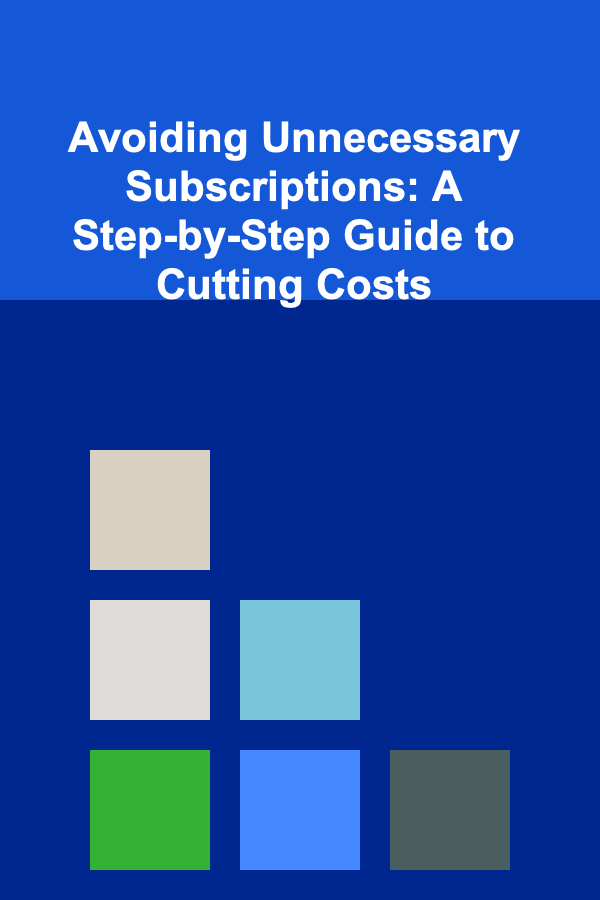
How to Determine Your Eligibility for Health Insurance Tax Credits
ebook include PDF & Audio bundle (Micro Guide)
$12.99$11.99
Limited Time Offer! Order within the next:

Health insurance is a crucial aspect of financial well-being, and with rising healthcare costs, having access to affordable health insurance is more important than ever. For many individuals and families in the United States, health insurance tax credits can provide essential financial assistance to reduce the cost of premiums and out-of-pocket expenses.
These tax credits, which were made available through the Affordable Care Act (ACA), aim to make health insurance more affordable for people who meet certain income and other eligibility requirements. However, determining whether you qualify for health insurance tax credits can be complex, involving various factors such as household size, income, and access to other health insurance options.
This article will explore how to determine your eligibility for health insurance tax credits, the types of tax credits available, and the steps you need to take to apply.
Understanding Health Insurance Tax Credits
Health insurance tax credits are designed to help individuals and families with moderate incomes afford health insurance coverage purchased through the Health Insurance Marketplace, established by the Affordable Care Act (ACA). These tax credits are divided into two main categories:
1. Premium Tax Credit (PTC)
The Premium Tax Credit (PTC) helps lower-income individuals and families reduce the monthly premiums they pay for health insurance purchased through the Health Insurance Marketplace. This credit is available for plans that are categorized as "Silver" plans, although people with higher incomes may qualify for credits for other plan categories as well.
The amount of the Premium Tax Credit depends on your income, household size, and the cost of insurance in your area. It is designed to ensure that no one spends more than a certain percentage of their income on health insurance premiums.
2. Cost-Sharing Reduction (CSR)
Cost-Sharing Reduction (CSR) is another type of financial assistance that helps lower-income individuals reduce out-of-pocket costs like deductibles, co-pays, and coinsurance. CSRs are available only for those who qualify for the Premium Tax Credit and purchase a Silver plan.
CSRs are designed to lower the amount you must pay when you get care, such as doctor's visits, prescriptions, or hospital stays, making healthcare more affordable.
Key Factors in Determining Eligibility
Several factors play a role in determining whether you qualify for health insurance tax credits. These include your income, household size, whether you have access to other forms of health insurance, and your immigration status. Let's break down each factor in more detail.
1. Household Size
Your household size includes you, your spouse (if married), and any dependents you claim on your tax return. The size of your household is important because it affects the income eligibility threshold for health insurance tax credits. A larger household generally has a higher eligibility threshold because they are expected to have more expenses.
For example:
- A single person with an income of $40,000 may not qualify for health insurance tax credits.
- A family of four with the same income may qualify because their eligibility threshold is higher.
The size of your household is reported when you apply for health insurance through the Health Insurance Marketplace, and it will determine the amount of tax credit you may be eligible for.
2. Modified Adjusted Gross Income (MAGI)
Your eligibility for health insurance tax credits is primarily determined by your Modified Adjusted Gross Income (MAGI), which is your total income after certain deductions. MAGI includes wages, salaries, tips, self-employment income, and other sources of income like rental income, unemployment benefits, and Social Security benefits. The MAGI is used to determine whether your income falls within the range for eligibility.
The MAGI is calculated by taking your Adjusted Gross Income (AGI) and adding back any non-taxable income such as Social Security benefits, tax-exempt interest, or foreign income. The resulting number is used to compare against the federal poverty level (FPL) to determine whether you qualify for tax credits.
3. Federal Poverty Level (FPL)
The Federal Poverty Level (FPL) is a set of income thresholds determined by the federal government each year. Your eligibility for tax credits depends on your MAGI relative to the FPL. The percentage of the FPL you fall under will determine how much help you can receive.
For the year 2025, for example, the federal poverty guidelines for the 48 contiguous states are as follows:
- 100% FPL for a household of one: $14,580
- 100% FPL for a household of four: $30,000
In general, to qualify for health insurance tax credits, your household income must be between 100% and 400% of the FPL. If your income is between 100% and 250% of the FPL, you may also qualify for Cost-Sharing Reductions (CSRs), which lower out-of-pocket costs.
4. Employer-Sponsored Insurance
Another important factor in determining eligibility for health insurance tax credits is whether you have access to affordable employer-sponsored health insurance. If your employer offers health insurance that meets certain standards of affordability and coverage, you generally will not qualify for tax credits through the Marketplace.
Here's how this works:
- Affordable Coverage: For the purposes of tax credits, employer-sponsored insurance is considered affordable if the monthly premium for individual coverage does not exceed 9.78% (for 2025) of your household income.
- Minimum Value: The insurance must cover at least 60% of the total cost of medical services. If your employer's insurance does not meet these criteria, you may be eligible for tax credits through the Marketplace.
If your employer's coverage is deemed unaffordable or does not meet the minimum value standard, you may qualify for tax credits even if you are offered employer-sponsored insurance.
5. Immigration Status
To qualify for health insurance tax credits, you must be a U.S. citizen or a legal resident. Non-citizens who do not have legal immigration status are not eligible for tax credits. However, some lawfully present immigrants may still be eligible for health insurance tax credits, depending on their immigration status.
Legal immigrants who are eligible for tax credits must meet the same income and household requirements as U.S. citizens. However, certain visa holders, such as those on temporary visas or undocumented immigrants, will not qualify for health insurance tax credits.
6. Age and Residency
Eligibility for health insurance tax credits is not limited by age (as long as you are under 65), but you must be a resident of the United States. The tax credits apply to individuals and families who are purchasing health insurance through the Health Insurance Marketplace.
How to Apply for Health Insurance Tax Credits
If you believe you may be eligible for health insurance tax credits, the next step is to apply through the Health Insurance Marketplace. Here's how you can apply:
1. Visit the Health Insurance Marketplace Website
The first step is to visit the official Health Insurance Marketplace website, which is healthcare.gov. The website allows you to compare plans, check if you qualify for tax credits, and apply for health insurance coverage.
2. Create an Account and Fill Out the Application
To apply for health insurance tax credits, you need to create an account on the Marketplace website. Once you've registered, you will be asked to fill out an application that includes questions about your household size, income, and access to other health insurance coverage. The application will also ask for your Social Security number and tax-related information, so make sure you have your tax returns handy.
3. Determine Eligibility
After submitting your application, the Health Insurance Marketplace will use the information you've provided to determine whether you qualify for health insurance tax credits. You will be notified of your eligibility status and the amount of the credit you may qualify for. This information will help you select the best plan for your needs and budget.
4. Select a Health Insurance Plan
Once you've been approved for tax credits, you can use the assistance to choose a health insurance plan on the Marketplace. You'll be able to compare different plans, premiums, and coverage options to find the best fit for you and your family.
5. Claim the Credit on Your Tax Return
Once you have received coverage through the Marketplace and paid your premiums, you will be required to file a federal tax return for the year. When filing, you'll need to report your health insurance coverage, and any premium tax credits you received during the year will be reflected on your tax return. If you received too much in tax credits based on an overestimated income, you may owe the excess back, while if you received too little, you can claim additional credits when filing.
Conclusion
Health insurance tax credits are an essential tool for making healthcare more affordable for many individuals and families. To determine whether you're eligible for these credits, it's important to understand the various factors that play a role, including household size, income, and access to employer-sponsored coverage.
The process of determining eligibility can be complex, but with the right information and resources, you can ensure that you are receiving the financial assistance you need. By applying through the Health Insurance Marketplace and understanding your rights and responsibilities, you can secure the coverage you need while minimizing your out-of-pocket costs.
Reading More From Our Other Websites
- [Home Budget Decorating 101] How to Incorporate Vintage Decor into Your Home on a Budget
- [Home Renovating 101] How to Create a Home Renovation Budget: From Planning to Project Completion, Staying on Track
- [Home Storage Solution 101] How to Safeguard Your Valuables: Best Practices for Waterproof Basement Storage
- [Home Rental Property 101] How to Ensure Your Rental Property is Safe for Families with Children
- [Organization Tip 101] How to Use Routines to Keep Your Home Organized
- [Personal Investment 101] How to Understand the Importance of Diversification in Your Investment Portfolio
- [Organization Tip 101] How to Set Up a Home Maintenance Schedule
- [Tie-Dyeing Tip 101] Eco-Chic Colors: A Beginner's Guide to Tie-Dyeing with Natural Plant Dyes
- [Personal Financial Planning 101] How to Plan Financially for Couples: Balancing Two Financial Realities
- [Home Pet Care 101] How to Travel with Pets: Tips for a Smooth Experience

Avoiding Unnecessary Subscriptions: A Step-by-Step Guide to Cutting Costs
Read More
How to Organize Your Home Security Records
Read More
Mastering Industrial Engineering: Best Practices for Streamlining Operations
Read More
How to Master Exploratory Testing Techniques
Read More
10 Tips for Marketing Your Cooking Class Business
Read More
How to Negotiate Lower Fees with Your Retirement Advisor
Read MoreOther Products

Avoiding Unnecessary Subscriptions: A Step-by-Step Guide to Cutting Costs
Read More
How to Organize Your Home Security Records
Read More
Mastering Industrial Engineering: Best Practices for Streamlining Operations
Read More
How to Master Exploratory Testing Techniques
Read More
10 Tips for Marketing Your Cooking Class Business
Read More